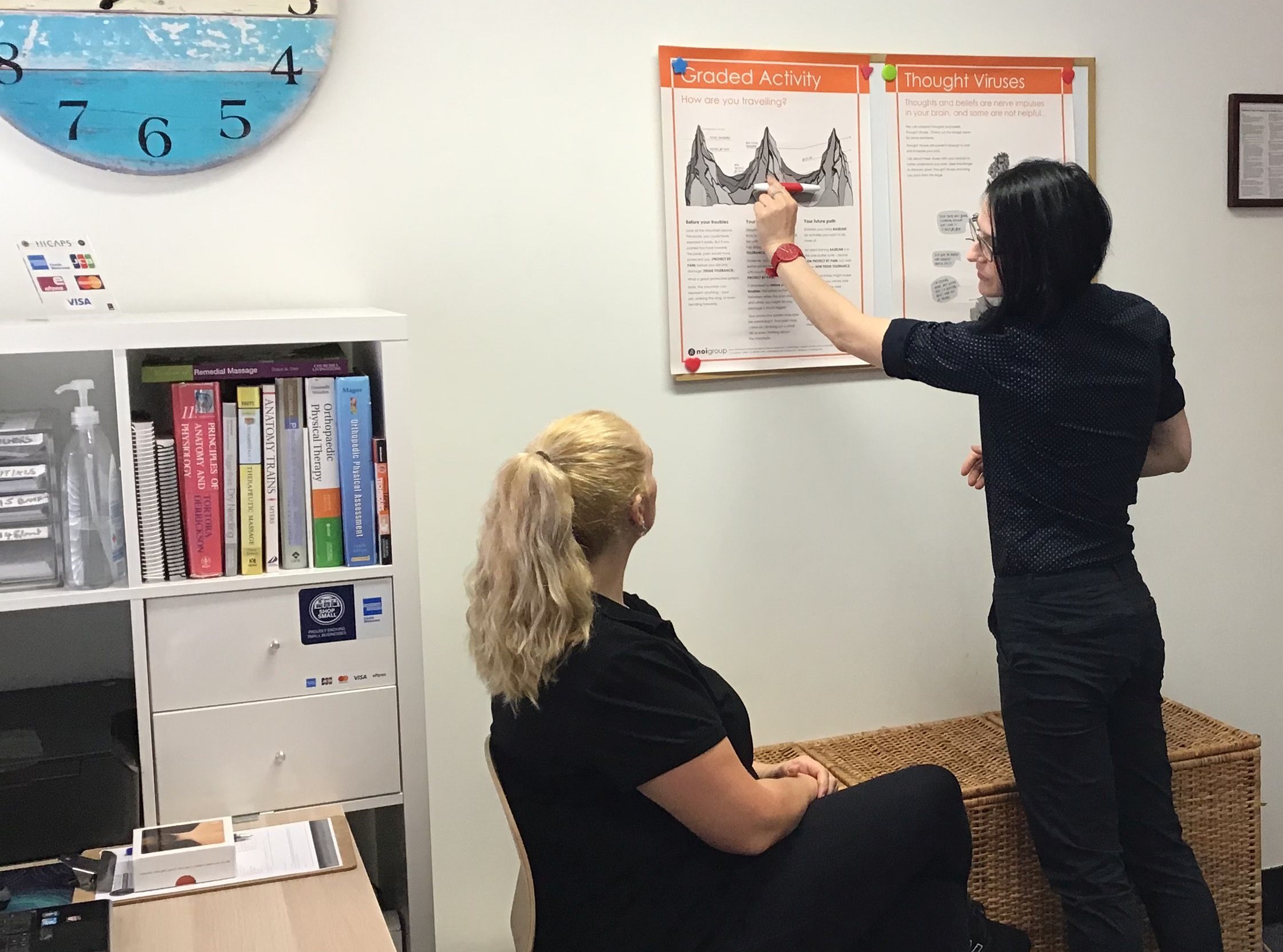Fibromyalgia Treatment
Your new chapter of recovery begins with us and our unique chronic pain treatment approaches.
Fibromyalgia Treatment
Your new chapter of recovery begins with us and our unique chronic pain treatment approaches.
FIBROMYALGIA – New treatment and management options at Mobilise
Fibromyalgia, a debilitating chronic pain syndrome, still baffles many health care practitioners around the world, and continues to be a scary and mysterious condition to those diagnosed with it.
Patients visiting health care professionals are often left with no clear explanation why they hurt, and more importantly how to put an end to their suffering. In the worst-case scenario patients hear that their pain is psychological or psychosomatic in nature which invalidates their pain experience and their pain-related suffering. This is why many Fibro-patients feel like their pain is not real or is ‘in their head’ leaving them feeling alone with their pain and daily struggles.
Fibromyalgia is a chronic pain condition, not just “muscle pain”
The diagnosis of fibromyalgia and the diagnostic process itself, have been controversial among health practitioners. As the pain is often perceived as arising in the muscles and joints, fibromyalgia has been considered an arthritic condition or a muscle disease for most of the 20th century. However, as our knowledge of the nervous system and chronic pain mechanisms has changed significantly over the last two decades, so has our understanding of fibromyalgia, which is now one of the most studied chronic pain conditions.
Fibro-Fog & Co. – What are the Symptoms of Fibromyalgia?
The most common fibromyalgia symptoms include diffuse, multifocal (found in more than one place) pain, sensitivity to touch, fatigue, memory difficulties, sleep and mood disturbances. Many fibromyalgia sufferers also experience headaches, difficulties with attention and concentration (Fibro-Fog), weight fluctuations as well as heat-cold-intolerance, irritable bowel and bladder syndrome, dizziness and restless leg syndrome are also commonly reported.
While symptoms such as chronic pain and fatigue are a result of the mechanisms underlying fibromyalgia, they also lead to further symptoms and aggravate the existing ones. Pain and fatigue reduce physical activity. This in turn leads to general de-conditioning, impacts sleep and mood, as well as reduces physical and mental exertion.
It is therefore crucial to address the symptoms in a way that will address the nervous system dysfunction.


We are neuroplastic – The new approach to Fibromyalgia treatment
Due to the nature of the condition, fibromyalgia presents a challenge in respect to treatment and management. Most recent treatment guidelines favour non-pharmacologic therapies over pain medication.
Contemporary non-pharmacological treatments have been shown to reduce fibromyalgia symptoms significantly which allows patients to experience a meaningful improvement in their quality of life.
Mobilise offers the most up-to date, cutting edge Fibromyalgia Treatment and management approaches, based on the latest neuroscience research and treatment programs currently implemented in the biggest chronic pain clinics in Australia.
Why is our Fibromyalgia Treatment Different?
Here at Mobilise, we address not only the main fibromyalgia symptoms and their underlying mechanisms, but also treat conditions that may occur along with fibromyalgia such as osteoarthritis that may amplify the pain and exacerbate other fibromyalgia symptoms.
Our Fibromyalgia Treatment is based on the plasticity of the nervous system. Neuroplasticity means that our nervous system is not hard-wired but highly adaptable and can change and re-organise itself accordingly to the inputs it receives. That is great news because it means that change and pain relief are possible for those suffering from fibromyalgia.
The Fibromyalgia treatment offered at Mobilise includes:
- Graded Motor Imagery
- Graded Neuro-Desensitisation
- Pain Reprocessing Therapy
- Virtual Reality and Relaxation Techniques
- Patient Neuroscience Education / Pain Education
- Manual Therapy
- Myofascial Release/Cupping
- TENS
- Return to Functional Activity/Pacing
- Occupational Therapy
